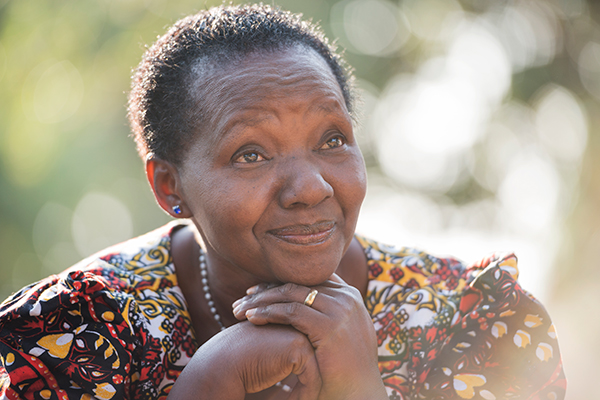
The Millennium Development Goals (MDGs) that guided global development since 2000 will shortly be replaced by the Sustainable Development Goals (SDGs). The MDGs were eight time-bound targets that sought, among other things, to reduce poverty, hunger and exclusion and to foster education, environmental sustainability and gender equality within 15 years.
Reaction to the MDGs was decidedly mixed. Skeptics felt that the broad universal goals were unachievable. Yet some successes have been dramatic.
The goal of cutting poverty in half was achieved five years before the deadline. Child mortality fell significantly and primary school enrollment, as targeted, is now almost universal: 91 percent in developing countries.
Although many of the goals remain unmet, the successes demonstrate that the focus provided by the MDGs rallied the international community to achieve crucial targets and improve people’s lives.
As the MDG expiration date approaches and the international community readies itself to adopt a new set of goals, the time is right to examine how we performed on advancing gender equality and what we can expect from the SDGs in terms of women and girls’ empowerment.
Missed opportunities
MDG3, which dealt with gender equality and women’s empowerment, targeted three key areas of women’s social, economic and political disadvantage: gender parity in primary education, share of women in wage employment and the proportion of seats held by women in national parliaments.
Results were mixed and uneven. Two-thirds of countries in developing regions successfully achieved gender parity in education. However, these gains do not always translate into gender parity in other aspects of economic, social and political life.
Overall, girls account for 55 percent of the out-of-school population. Progress in women’s share of paid employment was limited, increasing just 6 percent between 1990 and 2015 to its current standing at 41 percent. Finally, while the proportion of women in parliaments nearly doubled worldwide over the past 20 years, women still make up only one-fifth of parliamentarians.
According to some critics, a more important shortcoming related to gender equality in the MDGs was the narrow focus on just three indicators. Not addressed were other issues vital to gender equality such as violence against women, the unequal division of unpaid household work, violations of women’s sexual and reproductive health and rights and unequal participation in public and private decision-making.
Other omissions had to do with the structural factors that limit women’s rights and advancement such as unequal social norms and discrimination. Still others concern the ongoing lack of data on women and gender issues that limit monitoring and accountability.
The MDGs missed the opportunity to leverage synergies between goals and to apply gender perspectives that might have been revealing and yielded actionable results.
For example, although the poverty target was met, it is not clear what this means for women since aggregate household data used to calculate per capita income assumes resources are equitably distributed within households—often not the case.
Furthermore, women typically have lower incomes than men or do not earn income at all, and many do not participate in decision-making and lack control over the use of household income.
In short, women’s vulnerability to poverty is unique in some ways and not adequately captured by measures used to monitor the MDGs.
A global blueprint for equality
The proposed SDG framework that will be ratified at the United Nations this September, with 17 goals and 169 targets, is more comprehensive, inclusive and ambitious than the last round.
For example, the goals for poverty and hunger aim to reach zero as compared with the MDGs’ intent to halve. Goal 10 is exclusively devoted to reducing inequality within and among countries. It includes sub-goals to eliminate discrimination, reduce outcome inequalities and promote social, economic and political inclusivity.
This time around, the framework addresses many of the MDG shortcomings with respect to gender equality and women’s empowerment.
SDG 5, with its focus on gender equality and the empowerment of all women and girls, is more comprehensive than MDG 3.
In keeping with internationally agreed women’s and human rights frameworks, it commits to ending all forms of discrimination against women and girls and promotes “enforceable” legislation to advance gender equality and women’s empowerment. It aims to end all forms of violence against women in public and private spheres and eradicate harmful practices such as early and forced marriages.
It also promotes women’s equal access to economic resources and ownership of assets, universal access to sexual and reproductive health, and the use of Information and Communications Technology for women’s empowerment.
This time, gender is addressed throughout the SDG framework, thereby “mainstreaming” it and acknowledging its links to diverse aspects of sustainable development.
Thus, Goal 8 on economic growth includes employment and decent work for both women and men. It also targets equal pay for equal work, a persistent issue for women practically everywhere, and one that was overlooked in the MDGs.
Women’s roles are also explicitly addressed in goals pertaining to the environment, food security, water and sanitation, and climate change.
An overhauled blueprint for global action on gender equality will soon be in place. It represents the determined consensus of a broad spectrum of the international community committed to equality and progress for women everywhere.
Success for achieving the SDGs, of course, depends on sound implementation and financing, which call for international cooperation and accountability in meeting targets.
Whether it delivers results will also depend on our continuing commitment and diligence in working towards the empowerment of women and girls.

